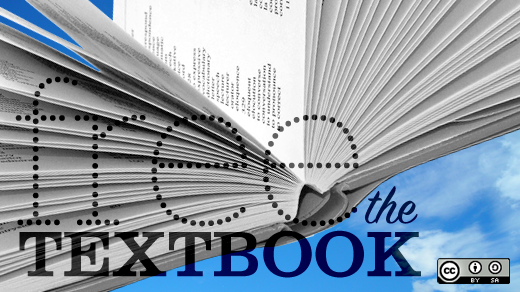Today the Washington State Board for Community and Technical Colleges (SBCTC) is launching The Open Course Library, a resource of open course materials from the top courses in the system, set to save nearly half a million students (and taxpayers who support many of them in financial aid) nearly a thousand dollars each every year.
But it's not just about savings--it's also about improving and customizing resources for better quality learning resources. The goals of The Open Course Library are to improve course completion rates and provide new resources for faculty. They approached openness in education based on four benefits:
- Efficiency: The ability to build on existing investments
- Affordability: Because students often can't afford textbooks
- Quality: We tend to do our best work when we know our peers can see it
- Self-interested: The side effect of increased faculty exposure, reputation, and opportunities
"It's an effort to take the highest enrolling and most critical 81 courses, and create openly licensed content for every course," said Tom Caswell, Open Education Policy Associate, SBCTC. Washington State set aside $750,000 for the initiative, which receives matching support from the Bill and Melinda Gates Foundation. About 90 community and technical college faculty are now involved across the state. The open courses have already been adopted by the creating faculty, who in one year who will have realized savings of $1.2 million--nearly enough to cover the cost of the entire first phase.
Courses are designed using existing OER whenever possible. "We didn't slam the door on publishers," he said. "We told them, 'We want all comers. We want to be able to work with high-qualtiy educational content, but $200 textbooks don't work for us.'" So they capped the textbook price at $30. Publishers responded well in working with them to meet that requirement. For students, that means a huge savings on the $1,000 a year they might have to spend on textbooks, which could be as much as a fourth of the cost of a two-year degree.
The Open Course Library differentiates itself from existing open courseware through a different workflow. The typical open courseware goes from content creation with the faculty to a support staff that turns that content into an organized, open course. OCL asks the faculty to use existing OER and fill in the gaps wiht their own materials to create an open course and teach directly from it, resulting in a more straight-line workflow. The organization doesn't have funding to keep a typical open courseware site alive, so they took this different approach in an attemp to jumpstart a cultural change instead. The ultimate model is two steps only: a master course and open course materials are linked, and the faculty course designer updates them both together.
Phase 1, featuring the first 42 courses is available today. The next 39 courses will come with Phase 2, available in Spring 2013. Also in that second phase, the project information will be better consolidated, and the project will use Google Docs and Google Sites for collaboration and sharing that are easier for faculty who many not be accustomed to an LMS.
Courses are primarily introduction-level "gatekeeper" and pre-college courses in subject areas across the board, from accounting and economics to languages, history, math and sciences.







3 Comments